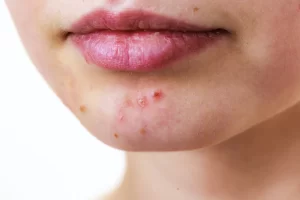
Innovations in Cosmetic Surgery – Trends and Techniques for Natural Results
Rather than advances in aesthetic surgery that stick more rigidly to archetypical beauty ideals, breakthroughs will focus on developing more natural-looking enhancements and the use of multiple procedures for multiple benefits. Regenerative technologies will also play a part in creating more realistic aesthetic outcomes.
Other innovations provide infection prevention and visually immersive virtual consulting for patients via augmented reality, while other startups develop sustainable technologies, such as green sutures, paper-based tests that don’t require pipettes, and energy-saving equipment.
Minimally Invasive Procedures
Minimally invasive developments in cosmetic surgery are among the newest trends in this type of medicine. Surgeons take advantage of these innovations as they are able to perform procedures through smaller incisions and achieve more natural outcomes accompanied by low downtime.
Injectables such as neuromodulators (eg, botulinum toxin type A) and dermal fillers, along with laser resurfacing, which reduces fine lines and wrinkles while improving skin texture with little to no downtime, have all risen in popularity since the advent of the COVID-19 pandemic.
AR has been used successfully in cosmetic surgery to generate real-time visuals that enable a more precise surgical plan and, ultimately, a better result. However, it can mislead patients into unrealistic expectations if they do not understand its utility.
Artificial Intelligence
Cosmetic surgery, once in the business of incredible transformations, moved towards subtle improvements, regardless of patient’s demands. Recent press coverage and appearance of medical celebrities like Jocelyn Wildenstein also offered patients the exact opposite of natural look, extreme cosmetic surgery, only to achieve aesthetic good to all.
All these objectives can be achieved more easily by the physician with the help of an AI-powered surgical approach. This is because the machine takes care of increasing the treatment precision and tailoring the craft to optimise outcomes, thanks to the large datasets upon which AI algorithms are trained to understand nuances, and predict patient-specific responses.
But to work properly, AI needs input from a plastic surgeon with expert knowledge to label features and make it intelligible; vision should not come at the expense of touch. Computer scientists and plastic surgeons will need to continue to work closely together, with AI complementing, not replacing, humans. And it could, in the future, have uses postoperatively, too, sending alerts to a plastic surgeon should early signs of complication become apparent.
Robot-Assisted Surgery
For example, surgical robots enable surgeons to use hand, wrist and finger movements to perform intricate manoeuvres with unparalleled precision and control, because the movements are translated from operator to instruments using digital fidelity translation technology. Surgical robots provide surgeons with extraordinary surgical fidelity and operative control because every intrinsic motion of their arms and hands is completely translated and directly used to control instruments in the operating field.
Surgeons reported far fewer physical complaints after robotic procedure than with minimally invasive operations, such as bursitis in the shoulder and back pain. Furthermore, other studies report the potential for robotics to decrease hospital costs by reducing length of stay and complications.
Yet the development of robotic devices move at a fast pace, which makes evaluation and clinical translation quite challenging. Further evaluation will need well-conducted randomised prospective trials with patient reported outcomes and cost-effectiveness analyses, with informed consent processes that embrace transparency on evidence, stages of development, conflicts of interest and surgical experience. Life cycle assessments could be undertaken, involving low resource settings, and perhaps even models that can increase adoption and sustainability.
Telemedicine
Telemedicine not only enables surgeons to reach a broader base of potential patients; it also facilitates consulting and even virtual surgery via remote-control of robotic equipment. In many instances, cosmetic surgery can be planned using digital 3D imaging software that creates pseudo views of the patient’s current and planned appearance.
Such technology also makes possible remote patient monitoring of recovery, obviating the need for in-person checkups: internally implanted wearable devices can continuously monitor wound healing and transmit that data directly to engineers for more efficient post-procedural care.
But he emphasised that, when using such tech, account needs to be taken of what’s known when applying it in practice. For example, if the platform is video conferencing, then special attention needs to be paid to those areas (referred to as ‘situational assessment’) as well as to body language (or ‘non-verbal analysis’) – all to ensure that the necessary processes to share information are suitable for safe and effective dialogue.
Sustainable Technologies
Plastic surgery has become de-stigmatised as social media stars post about lip injections and breast implants on Instagram and TikTok, which in turn have normalised cosmetic surgery to the point that it is now mainstream. As more people seek out noninvasive ‘tweakments’ to look natural and authentic, there is more demand for minimalist cosmetic tweaks that do not involve surgery.
Improved surgical outcomes are aided by digital imaging (available on computers here at the AAFPRS office) and laser technology, which create the kind of rapport contemporary cosmetic-surgery patients crave, especially when it comes to results. For instance, upon seeing potential changes against a realistic body type, the patient can better decide if cosmetic enhancement is for her.
Other groundbreaking technologies include bioabsorbable implants for facial contouring as well as 3D-printed breast implants, which allow for more natural results, while reducing the environmental destruction inherent in cosmetic surgery procedures.



Average Rating